Explore Flasher Wrasse in Lembeh Strait: Colors and Behavior
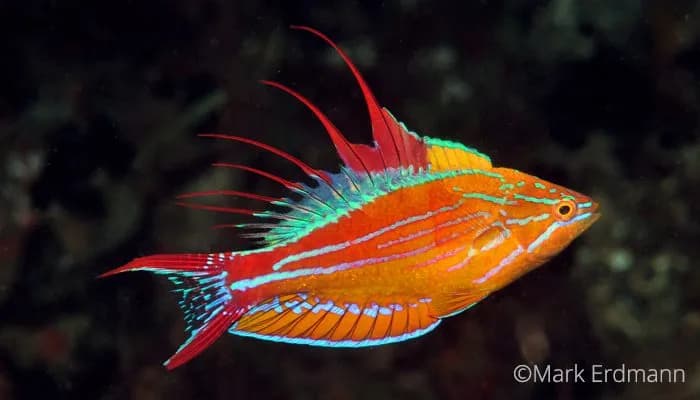
Have you heard of wrasse? If you have been diving for any period of time you will most likely know or have heard that wrasse are a relatively common family of fish (Labridae) with over 600 different species. However, only 20 of those species fall into the genus of Paracheilinus – AKA the flasher wrasse. In this Blog we will take a closer look at flasher wrasses and what makes them so… flashy!
Introducing The Flasher wrasse
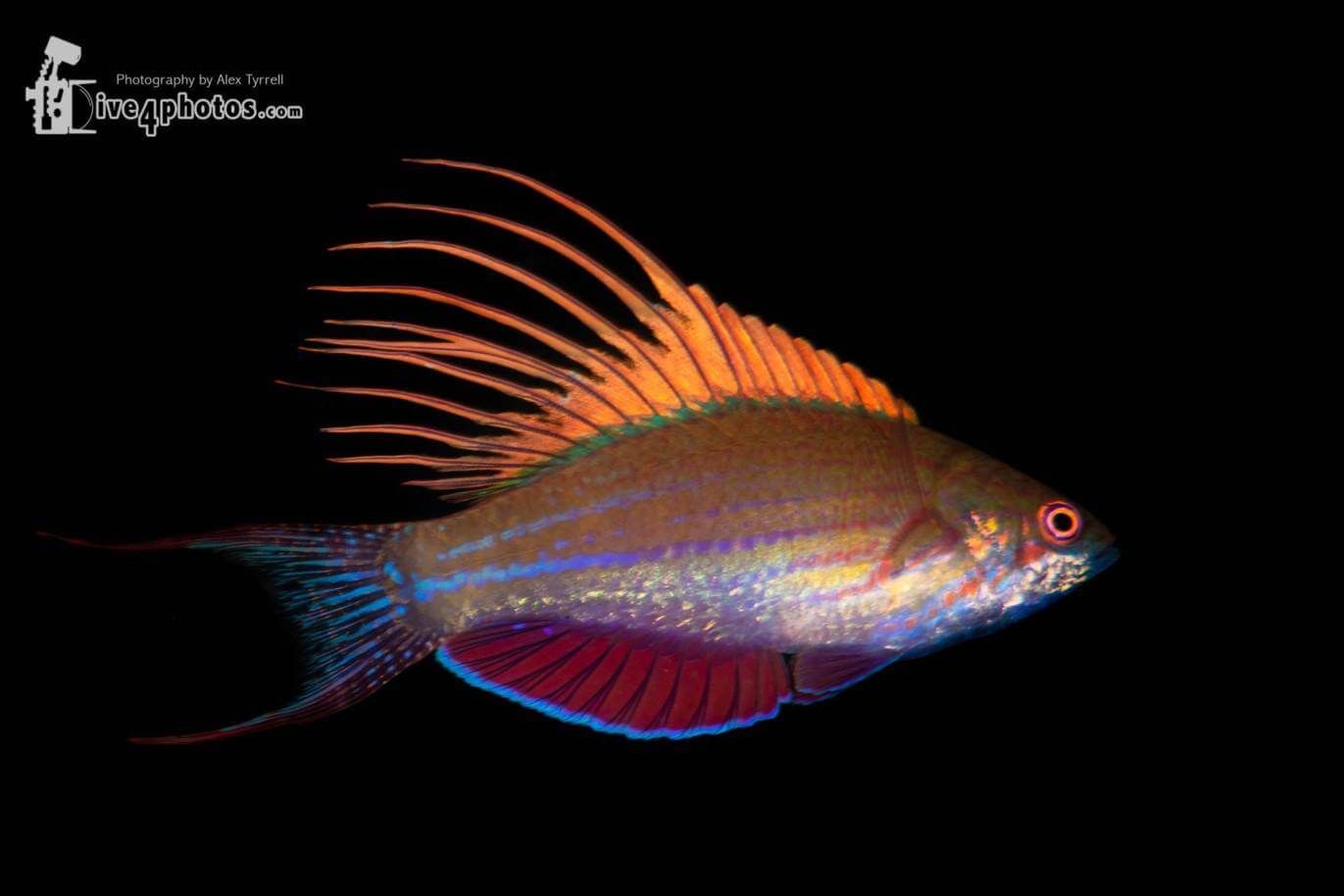
Alex Tyrrell: Flasher wrasse
These small wrasses would generally be overlooked by divers as just a dull brownish-red fish on the reef with little appeal. However, do not be fooled! Come late afternoon, the males rise up into the water column and suddenly “flash” to the harem of surrounding females – turning on brilliant color patterns and splaying out their ornate fins in a display that would put any peacock to shame. Capturing a male flasher wrasse in full nuptial coloration is one of the more challenging tasks an underwater photographer can undertake, but the satisfaction of catching this ephemeral firework show in focus is well worth it!
Variety of Species of Flasher Wrasse

Flasher wrasses (genus Paracheilinus) were only discovered in the mid-1970s when fish scientists (ichthyologists) began actively using scuba to support and further their research. Since that time a grand total of 20 different species have been described – 13 of which are found in the Coral Triangle. Visitors to Lembeh have the opportunity to see four different species: Paracheilinus cyaneus, Paracheilinu togeanensis, Paracheilinu carpenteri, and Paracheilinu paineorum.
Interestingly, because these species frequently co-occur in mixed species schools and all spawn at the same time, hybridization is a common occurrence – and Lembeh in particular has a high percentage of hybrids. This is only readily seen in the males, as the females of pretty much all flasher wrasses look the same (which is also partly responsible for the rampant hybridization!).
Physical Characteristics of Flasher Wrasse
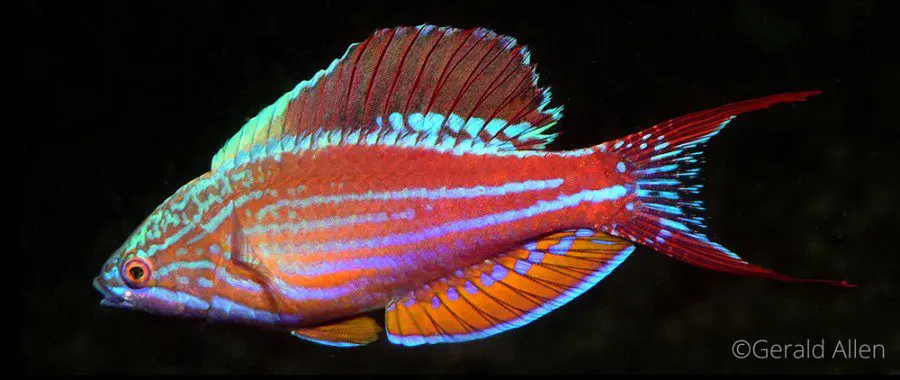
Depending on the species, flasher wrasses grow up to 3 to 5 inches. They have short snouts and beautiful dorsal, caudal (tail) and anal fins. In the males, these three fins become erect and splayed during the courtship flashing – giving even more of a surface area on which to display their flashes! Flasher wrasse have slender bodies when they are not courting, however, when males are flashing, their extended anal and dorsal fins give them the appearance of having a much deeper body shape.
In the species that we see in Lembeh both the dorsal and anal fins have long slender spines that are elongated by long filamentous extensions. Flasher wrasses caudal fins (tails) are truncated to rounded. You can witness the beauty of the Flasher Wrasse by trying bonfire diving with Lembeh Resort.
Flasher Wrasse Color Patterns
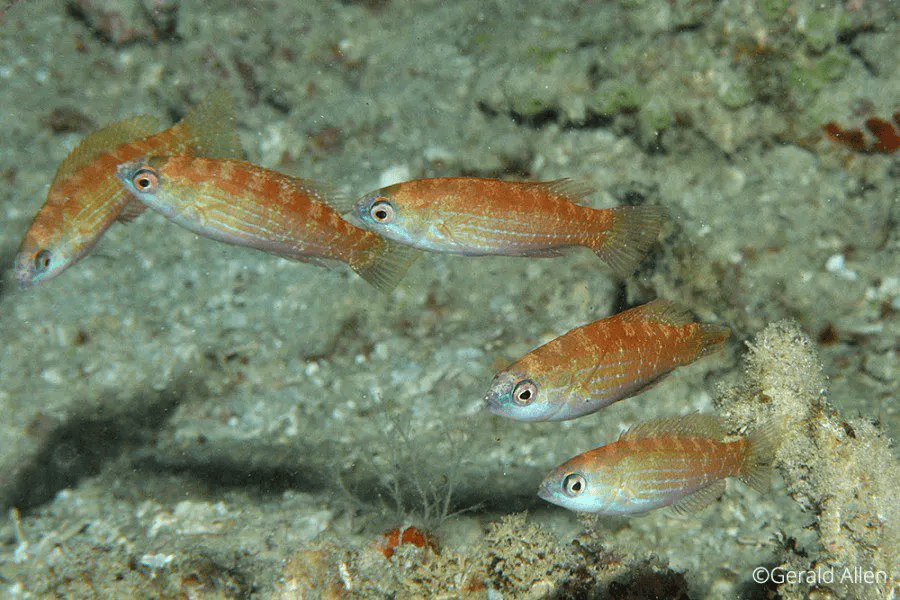
Like most other labrid fishes (fish in the wrasse – Labridae family), flasher wrasses are characterized by female-to-male (protogynous) sex reversal and exhibit different juvenile, female, and male color patterns.
Juveniles are not sexually active, however, when they do mature to sexual activity, they do so as females. Later in life, they develop into males and as they develop into mature males, that is when they begin to have flashing abilities.
Juveniles and female forms are usually a dull red to brown color but with similar patterns as males (the colors have yet to develop). As they mature into males their coloration becomes much brighter and they have color patches, blotches, dots, and stripes in a kaleidoscope of colors. Although males are colorful, it is when courting that their colors become much more pronounced, brighter, and more vibrant. The flashes appear as lines, spots, and patches on their fin tips in neon shades of blue, orange, yellow, and green – with neon blue being the most common. Don’t worry if you want to take photos of the beautiful creatures but don’t have a camera with you because Lembeh Resort can provide you with the best rental camera for your needs.
Flasher Wrasse Courtship (Flashing)
It is only the mature males that have the ability to ‘flash’ as part of their courtship routine. Courtship activities occur daily and generally commence about 1–2 hours before sunset. The neon-like flashes are produced instantaneously during an impressive display in which the colorful median fins are fully erected, sometimes including a spectacular filamentous dorsal fin (which is characteristic of several species in Lembeh). Although peak flashing behavior occurs just prior to dusk, it is also seen on overcast days at depth throughout the day
Nuptial activity gradually ceases after sunset with individuals swimming slowly or hovering close to the bottom. Finally, as darkness descends, they retire into crevices, usually among rubble or low-profile corals.
Habitat and Where to Find Flasher Wrasse in Lembeh
It’s quite easy to observe flasher wrasses in full nuptial displays here in Lembeh. It requires a trained eye and it is important to visit the right habitats at the right time of day. In general, flashers are most active at early dusk (4:30-5:30 pm). During daylight hours they can be seen in the water column (not flashing) where they feed on zooplankton.
They prefer mild to medium currents and usually can be found displaying at depths of 15-50m in rubble fields or Halimeda algae beds (habitats which are quite common in the Lembeh Strait). The northernmost section of Nudi Falls is one of the best areas to observe flashers in Lembeh, but there are many other sites – look for relatively flat, current-swept plains – not sand/muck, and not coral reef – but rubble fields or algae and low-growing coral colonies where the fish can gain shelter in a pinch. Other sites that yield good sightings in Lembeh are Critter Hunt, Tandurusa, and Bianca.
Flasher Wrasse Photography
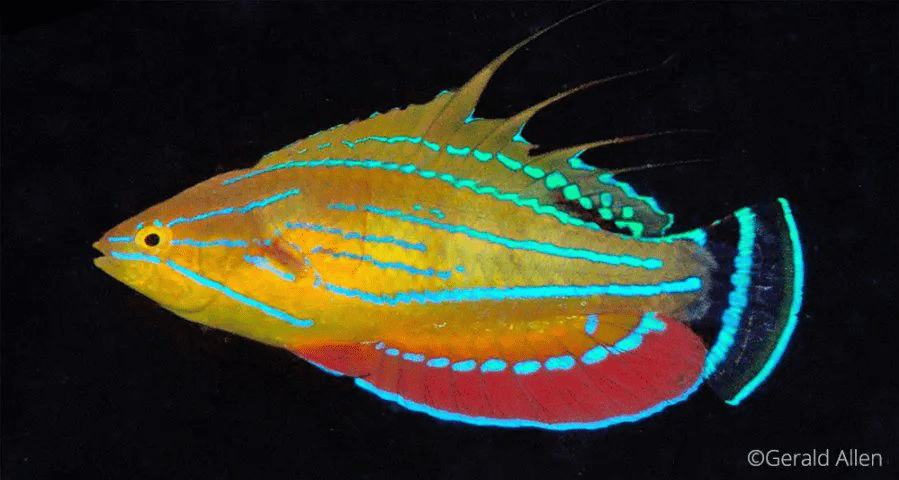
To optimize your chances of capturing a shot of a male flashing, head to one of the sites mentioned above at dusk. In the deeper patches, there are larger numbers of wrasses and they are almost always flashing during these hours. You can benefit from the best underwater camera recommendations featured on the Murex blog.
Flasher wrasse moves around quickly and during nuptials, they can change direction frequently and unpredictably. You will most likely be around 40-50cm away from the action so extend your strobes (or video lights) forward in front of you to close the distance between you and the subjects to reduce backscatter.
Photography Tips: If your camera allows for it, shoot with either AF tracking or pre-focus with AF. To compensate for the dusky light and the fast movements of the fish, we recommend increasing your ISO from your usual underwater settings. Shooting on a continuous burst can generate excellent images and is worth trying if you are struggling with individual shots.
Stay and Dive With Us
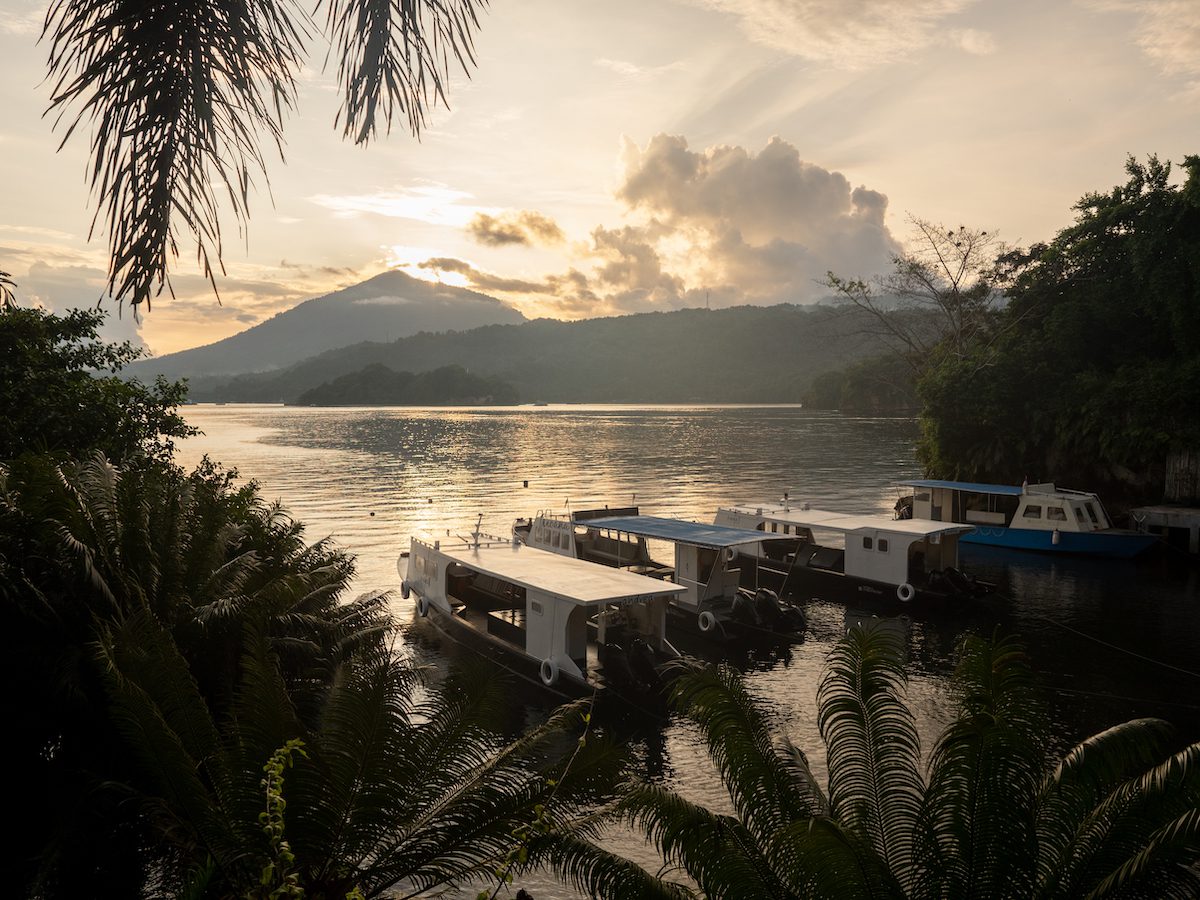
If you are ready to book your stay with us at Lembeh Resort or would like more information about our rates and availability contact us at reservations@LembehResort.com.
Our reservations team looks forward to assisting you!
Further Reading
If you enjoyed reading this article, you may also enjoy some of our other articles about the unique marine life found here in the Lembeh Strait:
• Pygmy Seahorses In The Lembeh Strait
• The Hairy Shrimp: Phycocaris simulans
• Unveiling The Unique Features Of The Poison Ocellate Mototi Octopus



